2017 Summer Reading Guide

Canada 150 Panoramas photos
by George Fischer
From frosty Mount Logan in the Yukon to the salty shores of Newfoundland, George Fischer’s stunning landscape photography celebrates the diverse appeal of every province and territory in Canada. With a chapter devoted to each region, Fischer captures the rugged natural beauty, vibrant city life, and abundant flora and fauna of this wide country.

Unbuttoned: A History of Mackenzie King’s Secret Life
by Christopher Dummit
When Prime Minister William Lyon Mackenzie King died in 1950, the public knew little about his eccentric private life. Yet twenty-five years after King’s death, the public was bombarded with stories about “Weird Willie,” the prime minister who communed with ghosts and cavorted with prostitutes. Christopher Dummitt relates the strange posthumous tale of King’s diary and details the specific decisions of King’s literary executors.
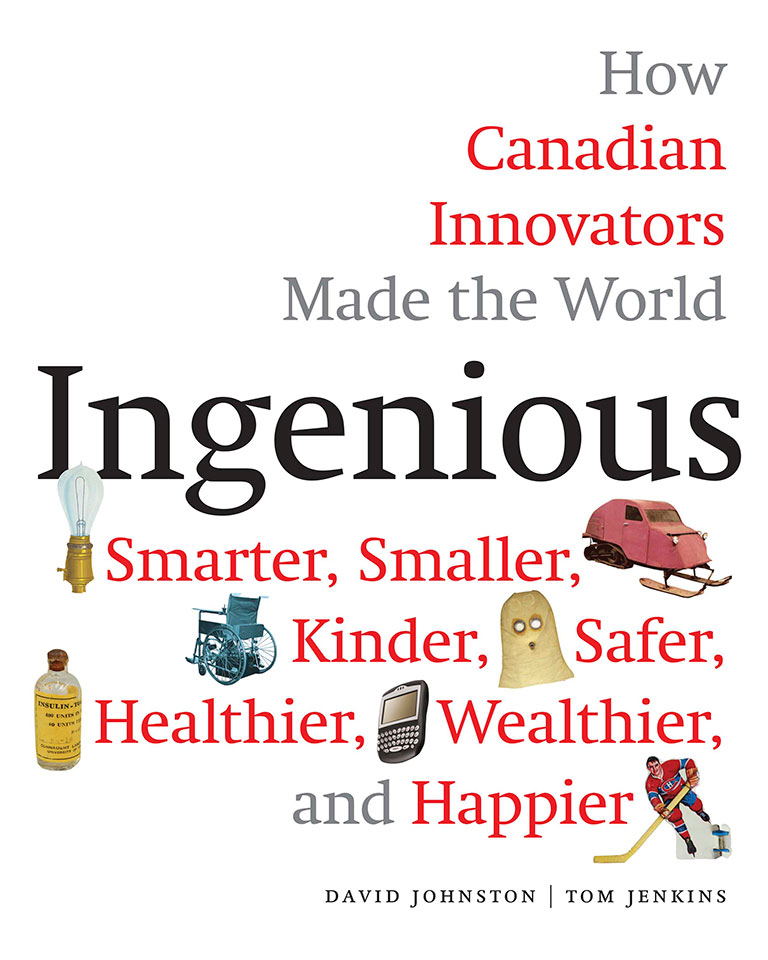
Ingenious: How Canadian Innovators Made the World Smarter, Smaller, Kinder, Safer, Healthier, Wealthier, and Happier
by David Johnston and Tom Jenkins
To celebrate Canada's 150th birthday, Governor General David Johnston and Tom Jenkins have crafted a richly illustrated volume of brilliant Canadian innovations whose widespread adoption has made the world a better place. From Bovril to BlackBerrys, light bulbs to liquid helium, peanut butter to Pablum, this is a surprising and incredibly varied collection to make Canadians proud.

Canada’s Odyssey: A Country Based on Incomplete Conquests
by Peter H. Russell
150 years after Confederation, Canada is known around the world for its social diversity and its commitment to principles of multiculturalism. But the road to contemporary Canada is a winding one, a story of division and conflict as well as union and accommodation. In Canada’s Odyssey, renowned scholar Peter H. Russell provides an expansive, accessible account of Canadian history from the pre-Confederation period to the present day.
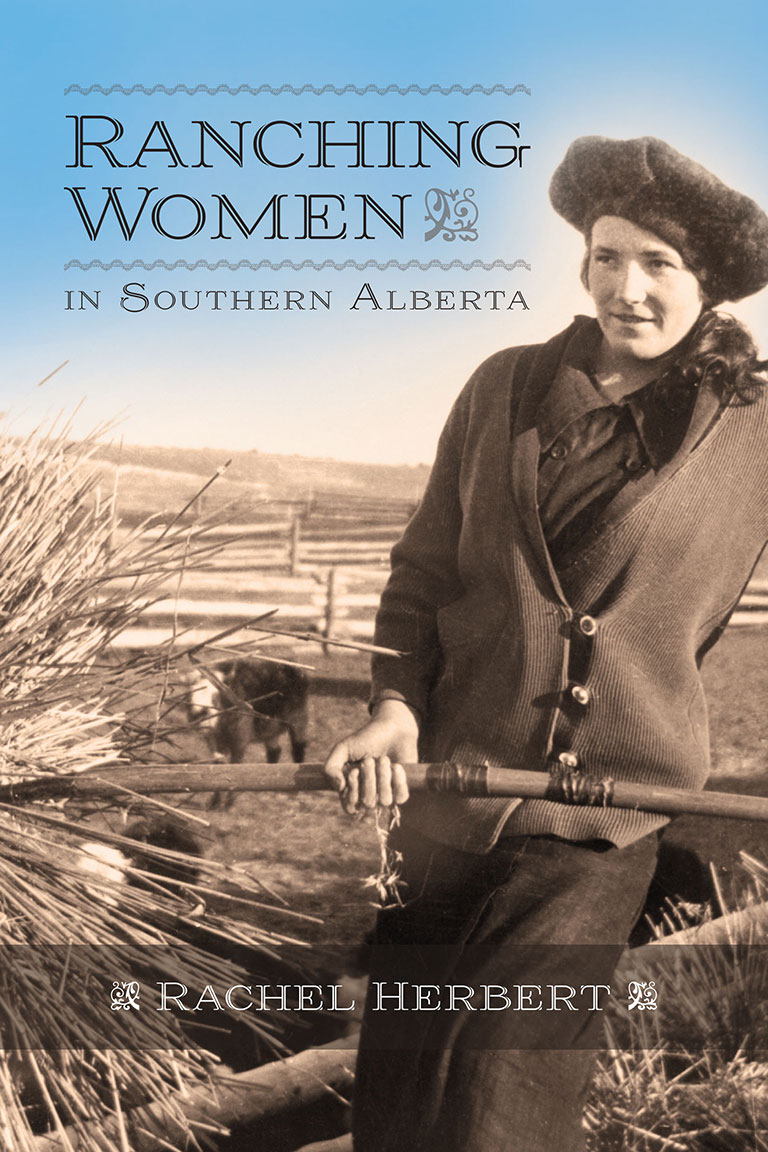
Ranching Women in Southern Alberta
by Rachel Herbert
Once dominated by large cattle operations covering thousands of acres, Alberta in the 1880s to 1930s saw a shift as small, family-owned ranches began to dot the province’s southern plains. Ranching women faced myriad challenges while at the same time enjoying more personal freedom than their urban and European contemporaries. This book pays homage to the brave and talented women who rode the range, carving out a role for themselves during the dawn of the family ranching era.

The Year Canadians Lost Their Minds and Found Their Country: The Centennial of 1967
by Tom Hawthorn
Richly illustrated with period photographs and ephemera, here is a quirky and nostalgia-laced reflection on the celebration of Canada’s centennial and the birth of modern nationalism.

Finding John Rae
by Alice Jane Hamilton
Hamilton follows Rae as he discovers not only the missing link to the Northwest Passage but evidence from the Inuit of cannibalism within the Franklin Expedition, and then into his later life as he fights to restore his reputation and that of the Inuit — after his report to the Admiralty had sent shock waves throughout Victorian England.

Aftershock: The Halifax Explosion and the Persecution of Pilot Francis Mackey
by Janet Maybee
On December 6, 1917, harbour pilot Francis Mackey was guiding Mont Blanc, a French munitions ship, into Bedford Basin to join a convoy across the Atlantic when it was rammed by Belgian Relief vessel Imo. The resulting massive explosion destroyed Halifax’s north end and left at least two thousand people dead, including pilot William Hayes aboard Imo. Through interviews with Mackey’s relatives, transcripts, letters, and newly exposed government documents, author Janet Maybee explores the circumstances leading up to the Halifax Explosion, the question of fault, and the impact on the pilot and his family of the unjust, deliberate persecution that followed.

From This Valley
a novel by Murray Harvey
The year is 1876, and Trooper Ryan Price Meade is a deserter from the US Army 7th Cavalry Regiment who strikes north, fleeing the Montana Territory just as Lt. Col. George Armstrong Custer closes in on Little Bighorn. Deeply troubled, Meade finds himself in Canada’s Northwest Territory, only to be confronted with all he has lost and come face to face with a ghost from the past — one that will alter the course of the rest of his life.

Catharine Parr Traill’s The Female Emigrant’s Guide: Cooking with a Canadian Classic
edited by Nathalie Cooke and Fiona Lucas
Originally published in 1855, Catharine Parr Traill’s classic The Female Emigrant’s Guide, with its admirable recipes, candid advice, and astute observations about local food sourcing, offers an intimate glimpse into the daily domestic and seasonal routines of settler life. In a distinctive and witty voice expressing her can-do attitude, Catharine Parr Traill’s The Female Emigrant’s Guide unlocks a wealth of information on historical foodways and culinary exploration.

One in a Thousand: The Life and Death of Captain Eddie McKay, Royal Flying Corps
by Graham Broad
This short book details the life and death of Eddie McKay, a varsity athlete at Western University, who flew with the Royal Flying Corps in the First World War. Graham Broad switches creatively from telling McKay’s fascinating story to teaching valuable lessons on how to do history and why the past matters.

Calgary: City of Animals
edited by Jim Ellis
What can we do to ensure that humans and animals in the city continue to co-exist, and even flourish together? This wide-ranging book explores the ways that animals inhabit our city, our lives and our imaginations. Essays from animal historians, wildlife specialists, artists and writers address key issues such as human-wildlife interactions, livestock in the city, and animal performers at the Calgary Stampede.
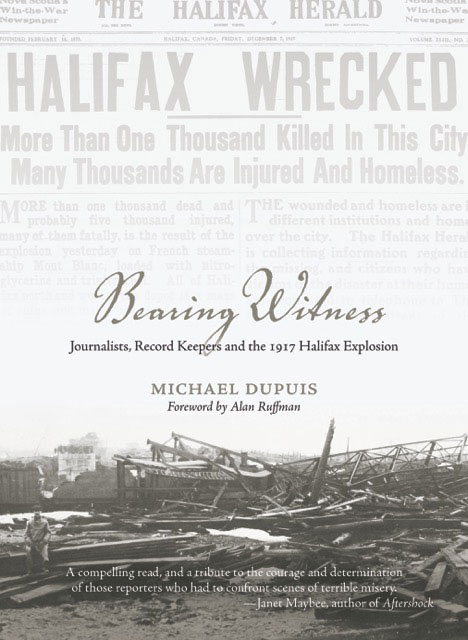
Bearing Witness: Journalists, Record Keepers and the 1917 Halifax Explosion
by Michael Dupuis, foreword by Alan Ruffman
This unique perspective of the Halifax Explosion offers new details and provides insight into the individuals who struggled to articulate the magnitude of the shocking event to the rest of the world.

Rise to Greatness: The History of Canada From the Vikings to the Present
by Conrad Black
From the acclaimed biographer and historian Conrad Black comes the definitive history of Canada — a revealing, groundbreaking account of the people and events that shaped a nation. This masterful history challenges our perception of our history and Canada’s role in the world, taking on sweeping themes and vividly recounting the story of Canada’s development from colony to dominion to country.

The Magnificent Nahanni: The Struggle to Protect a Wild Place
by Gordon Nelson, foreword by Harvey Locke
Extolling the natural wonders of the South Nahanni Valley — its untamed waters, high, glaciated mountains, great falls, alpine tundra, and diverse wildlife — The Magnificent Nahanni shows how close collaboration between the Dehcho First Nation and the Canadian Parks and Wilderness Society led to an iconic national park that honours Indigenous subsistence traditions.
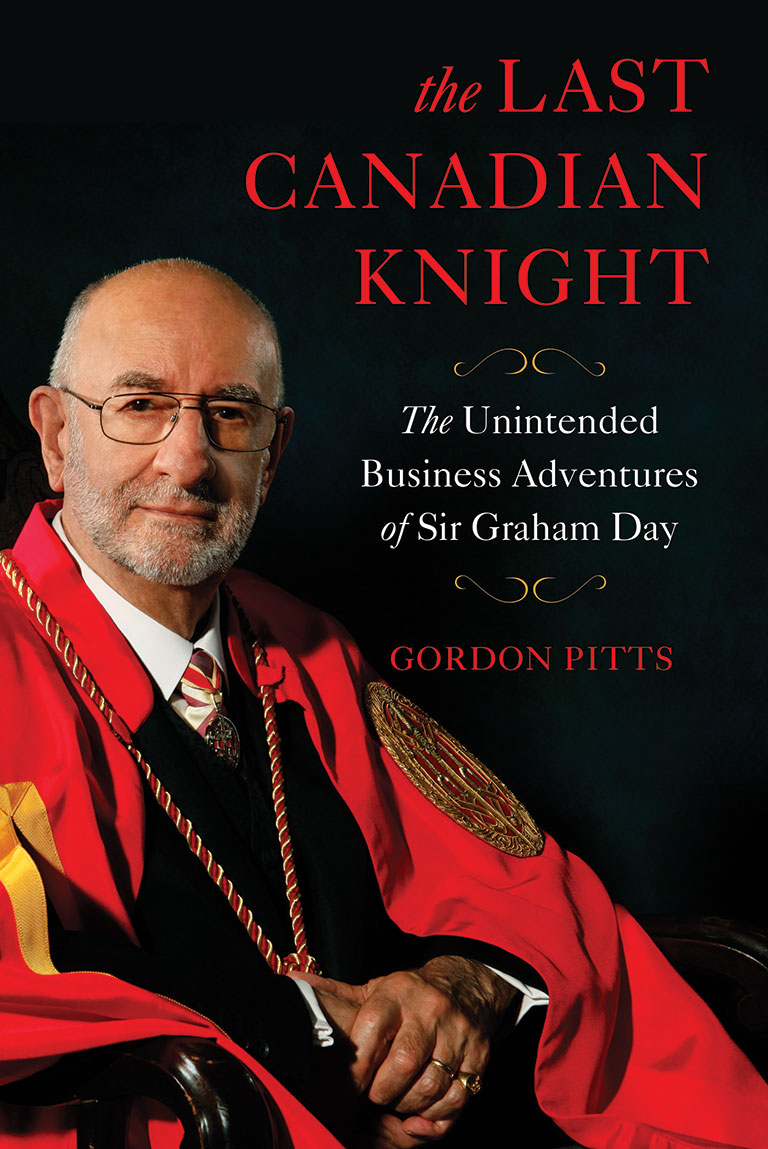
The Last Canadian Knight: The Unintended Business Adventures of Sir Graham Day
by Gordon Pitts
From a small-town law office in Nova Scotia to the pressure-cooker boardrooms of London, England, where he was Margaret Thatcher’s “privatization ace,” lawyer and businessman Sir Graham Day has earned an international reputation as a tough-minded but charming negotiator. In The Last Canadian Knight, award-winning business journalist Gordon Pitts chronicles Day’s meteoric rise and explores the lessons Day gleaned from a lifetime spent in and out of the world’s boardrooms.

Filling the Ranks: Manpower in the Canadian Expeditionary Force, 1914–1918
by Richard Holt, foreword by Tim Cook and J.L. Granatstein
In the First World War, much of Canada’s military effort went toward sustaining the Canadian Expeditionary Force, especially in France and Belgium. The first book to explore the issue of manpower in the Canadian Expeditionary Force, Filling the Ranks examines the administrative and organizational changes that fostered efficiency and sustained the army.

Animal Metropolis: Histories of Human-Animal Relations in Urban Canada
edited by Joanna Dean, Darcy Ingram, and Christabelle Sethna
Animal Metropolis brings a Canadian perspective to the growing field of animal history, ranging across species and cities, from the beavers who engineered Stanley Park to the cart horses who shaped the city of Montreal. The authors collectively push forward from a historiography that features non-human animals as objects within human-centred inquiries to a historiography that considers the eclectic contacts, exchanges, and cohabitation of human and non-human animals.

The Order of Canada: Genesis of an Honours System, Second Edition
by Christopher McCreery
In 1966, a project to create a national honour for Canadians was begun. The order recognizes individuals for their outstanding achievements, dedication, and service to the country. Extensively illustrated, The Order of Canada pays tribute to the individuals who felt the need for a system of recognition for Canadians. Indeed, the order’s history is as fascinating as the more than four thousand Canadians who have received it.

The Colour of Canada
with an Introduction by Roy MacGregor
With text by Roy MacGregor, one of Canada’s most beloved and respected authors and journalists, and a carefully curated selection of glorious full-colour photographs from Canada’s premier photo archive, All Canada Photos, The Colour of Canada captures a diverse and extraordinary terrain, natural and man-made, that is the envy of the world.

A Tale of Two Countries: How the Great Demographic Imbalance is Pulling Canada Apart
by Richard Saillant, foreword by Donald J. Savoie
What author Richard Saillant calls Canada’s Great Demographic Imbalance — “the highly uneven pace at which Canada’s regions are aging” — policy analyst Donald J. Savoie, in his foreword, calls “one of the country’s most demanding challenges for the next two decades.” A Tale of Two Countries is a must-read for those seeking an accessible, evidence-based policy analysis of Canada’s uncertain future, recommendations for addressing its consequences, and their potential impact on all Canadians.

Tax, Order, and Good Government: A New Political History of Canada, 1867–1917
by E.A. Heaman
Was Canada’s Dominion experiment of 1867 an experiment in political domination? Looking to taxes provides the answer: They are a privileged measure of both political agency and political domination. Tax, Order, and Good Government follows the money and returns taxation to where it belongs: at the heart of Canada’s political, economic, and social history.

The Frontier of Patriotism: Alberta and the First World War
edited by Adriana A. Davies and Jeff Keshen
The Frontier of Patriotism provides an in-depth look at all aspects of Alberta’s involvement in the First World War, reflecting Albertans’ experiences both on the battlefield and on the home front. Contributors of the 40 essays all draw heavily on national and local archival resources. The war is seen through the letters, diaries and memoirs of the individuals who lived through it, as well as through accounts in local newspapers.

100 Photos That Changed Canada
edited by Mark Collin Reid
From the Last Spike to Pierre Trudeau, from Vimy Ridge to Terry Fox, from Bob and Doug McKenzie to Ben Johnson, from Sir John A. Macdonald to Kim Campbell — these subjects come to life in 100 images that touch us, unsettle us, or make us proud to be Canadian. Contributors include Christie Blatchford, Will Ferguson, J.L. Granatstein, Peter Mansbridge, Don Newman, Jacques Poitras and Winona Wheeler.

The Right Relationship: Reimagining the Implementation of Historical Treaties
edited by John Borrows and Michael Coyle
The relationship between Canada’s Indigenous peoples and the Canadian government is one that has increasingly come to the fore. In The Right Relationship, John Borrows and Michael Coyle bring together a group of renowned scholars, both Indigenous and non-Indigenous, to cast light on the magnitude of the challenges Canadians face in seeking a consensus on the nature of treaty partnership in the twenty-first century.

Not My Party: The Rise and Fall of Canadian Tories, from Robert Stanfield to Stephen Harper
by Tom McMillan
This outspoken, timely book by former Mulroney Cabinet Minister Tom McMillan indicts Stephen Harper for destroying the historic Canadian Conservative Party while prime minister and party leader, accusing him of turning a force for progressive Canadian values into an American Republican-style vehicle for right-wing ideologues.

Vimy: The Battle and the Legend
by Tim Cook
Why does Vimy matter? How did a four-day battle at the midpoint of the Great War, a clash that had little strategic impact on the larger Allied war effort, become elevated to a national symbol of Canadian identity? Tim Cook, Canada’s foremost military historian and a Charles Taylor Prize winner, examines the Battle of Vimy Ridge and the way the memory of it has evolved over 100 years.

Whose Man in Havana?: Adventures from the Far Side of Diplomacy
by John W. Graham
In Whose Man in Havana? John Graham provides us with a direct look at international relations through his experience as a practitioner who, as he puts it, has been fortunate in his career within the Canadian foreign service and international organizations to be “in the right place at the right time.” The stuff of novels, he never would have dreamed that his apprenticeship would have him stationed in Cuba spying for the CIA on Soviet military operations.
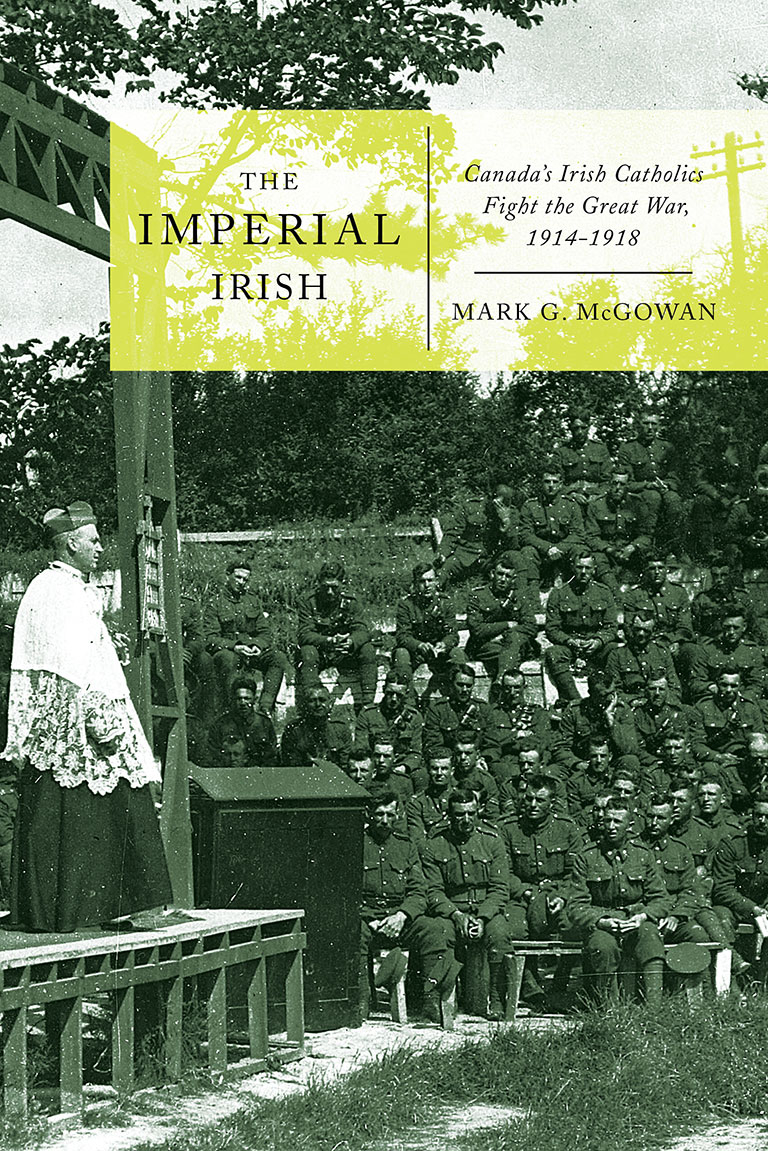
The Imperial Irish: Canada’s Irish Catholics Fight the Great War, 1914–1918
by Mark G. McGowan
Between 1914 and 1918, many Irish Catholics in Canada found themselves in a vulnerable position. Not only was the Great War slaughtering millions, but tension and violence was mounting in Ireland over the question of independence from Britain and Home Rule. Grounded in research from dozens of archives as well as census data and personnel records, The Imperial Irish explores stirring conflicts that threatened to irreparably divide Canada along religious and linguistic lines.

The Sea Was in Their Blood: The Disappearance of the Miss Ally’s Five-Man Crew
by Quentin Casey
It was a frigid night in February 2013 when the five young fishermen vanished. The crew of the Miss Ally — a 12-metre Cape Islander from Woods Harbour, Nova Scotia — was fishing for halibut far off the Nova Scotia coast when their boat’s spotlight malfunctioned. A vicious winter storm was approaching from her south, and all other boats at the fishing grounds were steaming for shore. The Sea Was in Their Blood explores two key questions: who were the men aboard the Miss Ally, and why were they battered and sunk by a storm forecasted days in advance?

Canada: An Illustrated History
by Derek Hayes
A visually spectacular saga of the events and people that shaped Canada and its psyche — updated with a new chapter bringing the book to the present.

Louis Riel: Let Justice Be Done
by David Doyle
In this imaginative re-enactment, Riel is finally given the opportunity to respond to his conviction for treason, offering his side of the story at Batoche, Red River, and in the Fenian raids — showing why he is now a Father of Manitoba and deserving of exoneration in 2017.

Yakuglas’ Legacy: The Art and Times of Charlie James
by Ronald W. Hawker
Yakuglas’ Legacy examines the life of Charlie James (1867–1937), a premier carver and painter from the Kwakwaka'wakw First Nation of British Columbia. Also known by his ceremonial name Yakuglas, he was a prolific artist and activist during a period of severe oppression for First Nations people in Canada. Yakuglas’ Legacy is at once a beautiful and poignant book about the impact of the Canadian project on Aboriginal people and their artistic response.

Legacy: How French Canadians Shaped North America
edited by André Pratte and Jonathan Kay
A groundbreaking work of nation building, this unique biographical book by many of English and French Canada's best-known writers and thinkers — Margaret Atwood, Lucien Bouchard, Dr. Samantha Nutt, Ken Dryden, etc. — tells the story of the extraordinary legacy of the French contribution to our very way of life.

Polaris: The Chief Scientist’s Recollections of the American North Pole Expedition, 1871–73
by Emil Bessels, translated and edited by William Barr
Emil Bessels was chief scientist and medical officer on George Francis Hall’s ill-fated American North Pole expedition of 1871–73 on board the ship Polaris. Bessels’ book, translated from the German in its entirety for the first time, is one of only two first-hand accounts of the voyage, and it is the only first-hand account of the experiences of the group that stayed with the ship after it ran afoul of Arctic ice, leaving some of its crew stranded on an ice floe.

Sable Island in Black and White
by Jill Martin Bouteillier
The newest addition to the Images of Our Past series, Sable Island in Black and White is a fascinating look at day-to-day life on Nova Scotia’s most secluded outpost during the nineteenth century. This narrative history — accented by more than 100 black-and-white family photographs of the island’s famous shipwrecks, wild horses, and visitors — tells the incredible true story of a stalwart group of ordinary people who called Sable Island home.

A Grand Adventure: The Lives of Helge and Anne Stine Ingstad and Their Discovery of a Viking Settlement in North America
by Benedicte Ingstad
In 1960, Helge Ingstad and Anne Stine Ingstad made a discovery that rewrote the history of European exploration and colonization of North America — a thousand-year-old Viking settlement at L’Anse aux Meadows, Newfoundland. In A Grand Adventure, the Ingstads’ daughter Benedicte tells the story of their remarkable lives spent working together.
Themes associated with this article
Sponsored by

The 2017 Summer Reading Guide is brought to you by McGill-Queen’s University Press, Nimbus Publishing Canada, Penguin Random House Canada, University of Calgary Press, and University of Toronto Press.
Advertisement









